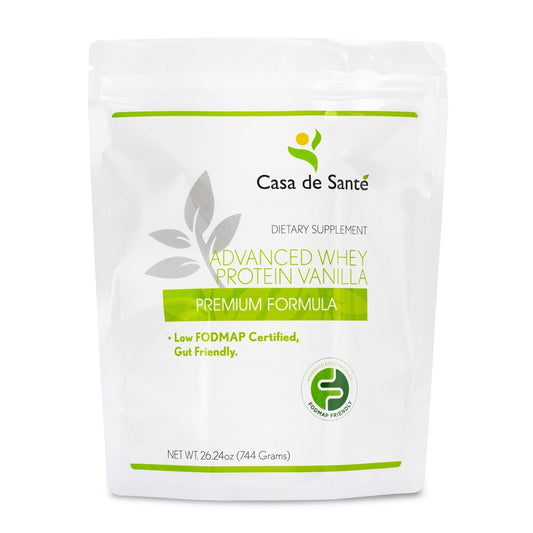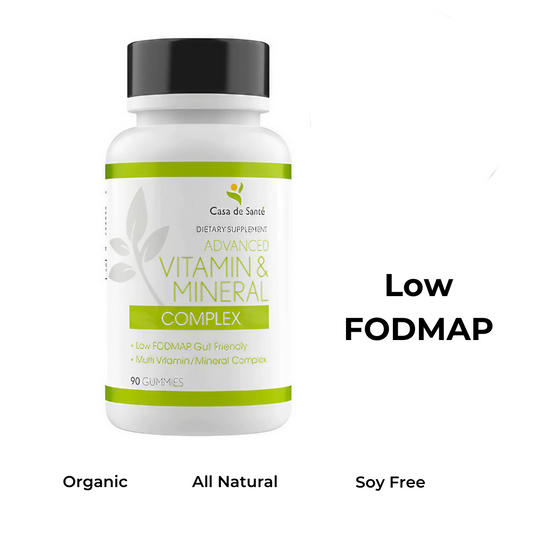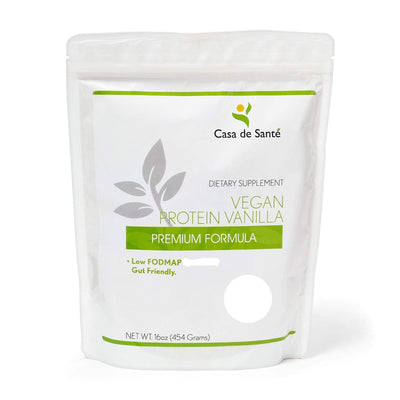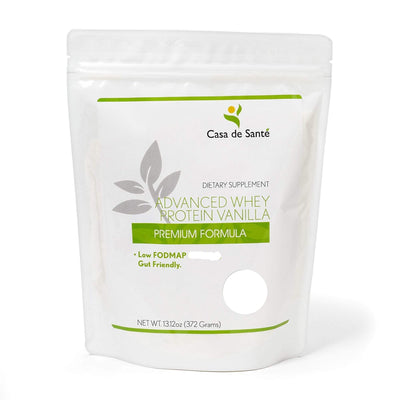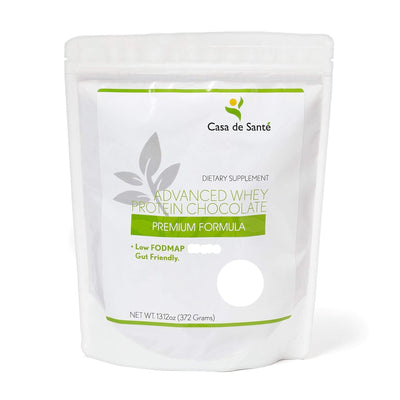Should People with POTS Drink Electrolytes? Understanding the Benefits and Best Practices
If you have POTS, or Postural Orthostatic Tachycardia Syndrome, you might be wondering about the role of electrolytes in your hydration routine. Staying hydrated is crucial for managing symptoms, but it’s not just about drinking water. Electrolytes play a significant part in keeping your body functioning well. In this article, we’ll explore whether people with POTS should drink electrolytes, the benefits of doing so, and some best practices to follow.
Key Takeaways
- Electrolytes are essential for hydration, especially for those with POTS.
- Sodium and potassium are key electrolytes to focus on for symptom management.
- Drinking plain water alone may not be enough; consider electrolyte-rich options.
- Establish a hydration routine that works for you and monitor your body’s signals.
- Products like Buoy’s Rescue Drops can be beneficial for maintaining electrolyte balance.
The Role of Electrolytes in Hydration
For people dealing with POTS, staying hydrated is more than just drinking enough water. It's about maintaining the right balance of electrolytes, especially sodium and potassium, which is super important for managing symptoms and feeling good overall.
Why Electrolytes Matter
Electrolytes are basically minerals that carry an electric charge in your blood and other fluids. They're involved in a bunch of important processes, like helping your nerves and muscles work right, keeping you hydrated, balancing the acidity and pressure of your blood, and even repairing damaged tissue. Think of them as the unsung heroes of your body's operation.
Key Electrolytes for POTS
Knowing what each electrolyte does is key when you're trying to manage POTS. While all electrolytes are important, some are especially crucial. Let's break down the main ones:
- Sodium: This is probably the most important one for POTS patients. Getting enough sodium can help increase your blood volume and ease symptoms. A lot of doctors tell POTS patients to up their sodium intake to ½ to 1 ½ teaspoons (or 3-10 grams) of salt per day, but definitely talk to your doctor to figure out what's right for you.
- Potassium: This one works with sodium to keep your fluid levels balanced and helps with nerve signals. Plus, it's essential for keeping your heart working properly.
- Magnesium: Magnesium helps regulate muscle and nerve function, keeps your blood sugar levels in check, and helps maintain healthy blood pressure.
- Calcium: This electrolyte is important for muscle function, including your heart, and it also helps keep your bones and teeth strong.
It's super important to keep these electrolytes balanced to manage POTS symptoms. But remember, everyone's different, and your electrolyte needs might not be the same as someone else's. Always work with your doctor to figure out an electrolyte plan that's tailored to you, and get your levels checked regularly to make sure everything's in the right range.
POTS-Friendly Electrolyte Sources
To keep your electrolytes in check, here are some options to consider:
- Electrolyte Drinks: Look for drinks that are made specifically for POTS. These often have more sodium than regular sports drinks. Normalyte offers a POTS-friendly electrolyte drink designed to effectively rehydrate and support those with Postural Orthostatic Tachycardia Syndrome (POTS), ensuring optimal hydration and health.
- Electrolyte Supplements: These can be a convenient way to boost your electrolyte intake, especially if you have trouble getting enough from food and drinks alone.
- Salty Snacks: Things like salted nuts, pickles, and olives can help you get more sodium throughout the day.
It's worth noting that some people with POTS find that very cold water can sometimes trigger symptoms. If that's the case for you, try drinking room temperature or slightly cool water instead. Everyone's body is different, so pay attention to what works best for you and adjust accordingly.
Why Hydration is Key in Managing POTS

For those of us dealing with POTS, staying hydrated isn't just about quenching thirst; it's a real cornerstone of managing the condition. I've found that when I'm not drinking enough, my symptoms get way worse. Let's get into why keeping up with fluids is so important.
Blood Volume Regulation
POTS often comes with low blood volume, which can make everything feel so much harder. Proper hydration helps increase blood volume, making it easier for your body to keep blood flowing, especially when you stand up. Think of it like this: if you don't have enough fluid, your body has to work extra hard to pump blood around, and that's when the dizziness and fatigue kick in.
Blood Pressure Stabilization
Staying hydrated also helps keep your blood pressure more stable. This is super important because many POTS patients experience blood pressure drops when they stand, leading to that awful lightheadedness or even fainting. When you're well-hydrated, your body is better equipped to handle those changes in position without your blood pressure taking a nosedive.
Heart Rate Control
Good hydration can help reduce the rapid heart rate that many POTS patients experience when standing. By keeping your blood volume up and improving circulation, your heart doesn't have to work as hard to pump blood around. It's like giving your heart a little break, which can make a big difference in how you feel overall.
Symptom Reduction
Staying properly hydrated can significantly reduce common POTS symptoms like dizziness, fatigue, and those dreaded fainting spells. It's not a cure-all, but it's a simple, effective way to manage your condition and improve your quality of life. I've noticed a huge difference in my energy levels and overall well-being when I make hydration a priority.
Maintaining proper hydration is a simple yet powerful tool in managing POTS. It helps stabilize blood volume, regulate blood pressure, and control heart rate, leading to a noticeable reduction in symptoms. It's about making a conscious effort to drink enough fluids throughout the day, every day.
Daily Hydration Goals for POTS Patients
Okay, so figuring out how much to drink when you have POTS can feel like a guessing game. But it's super important to get it right! Here's a breakdown to help you stay on track.
Base Recommendation
Generally, people with POTS should aim for 2 to 4 liters of fluid each day. That's roughly 8 to 16 cups. It sounds like a lot, I know! But POTS often messes with your blood volume, so you need more than the average person. Think of it as your new normal. It's more than the usual recommendation, but it's what many POTS patients need to feel their best. Consider using electrolyte drinks like Banana Bag Oral Solution to help you reach your goals.
Timing Your Fluid Intake
Don't chug a gallon all at once! That can actually make things worse. Instead, try to spread your fluid intake throughout the day. A good rule of thumb is to aim for about one cup (8 ounces) every hour you're awake. Set reminders on your phone if you need to. It's all about consistency. This helps your body absorb the fluids better and keeps your blood volume more stable.
Listening to Your Body
Pay attention to your body's signals. Thirst is an obvious one, but don't wait until you're parched to drink. Also, check the color of your urine. Pale yellow is a good sign that you're well-hydrated. If it's dark, it's time to drink up! Everyone's different, so find what works best for you.
It's a good idea to keep a water bottle with you at all times. This way, you can sip throughout the day and stay hydrated without even thinking about it. You can also try adding some flavor to your water with fruits like lemon or cucumber to make it more appealing.
Hydration Myths: What You Should Avoid
When it comes to hydration with POTS, there are some common ideas that can actually make things worse. Let's look at some of these myths and what you should do instead.
Overhydrating with Plain Water
While staying hydrated is important, drinking too much plain water without enough electrolytes can be harmful. It can lead to hyponatremia, where your blood sodium levels get too low. This can worsen POTS symptoms. Instead, balance your water intake with POTS-friendly electrolytes. Consider adding electrolyte drops to your water throughout the day to maintain proper levels.
Drinking Caffeinated Beverages
Some people use caffeinated drinks for hydration and a quick energy boost. While caffeine might give you a temporary lift, it's also a diuretic. This means it can increase fluid loss. For many with POTS, caffeine can worsen symptoms by increasing heart rate. It's best to limit or avoid caffeinated drinks. If you do drink caffeine, balance it with extra water and electrolytes. Pay attention to how your body responds.
Consuming Alcohol
Alcohol is another diuretic that can lead to dehydration. It can also affect blood pressure and heart rate, potentially worsening POTS symptoms. It's generally best to avoid alcohol if you have POTS. If you choose to drink, do so in moderation and be sure to hydrate well with water and electrolytes before, during, and after.
Staying hydrated is key, but it's also about doing it the right way. Avoid these common mistakes to better manage your POTS symptoms.
Best Practices for Electrolyte Consumption
Choosing the Right Electrolyte Products
Okay, so you're on board with the whole electrolyte thing. Great! But not all electrolyte products are created equal. You really gotta read the labels. Look for products that are specifically formulated for people with POTS, meaning they'll have a higher sodium content than your average sports drink. A lot of those sugary sports drinks? They might actually make you feel worse. Seriously.
Incorporating Electrolytes into Your Diet
Alright, so you've got your electrolyte drink or supplement. Now what? Don't just chug it all at once! Consistency is key here.
Here's a few ideas:
- Start your day with an electrolyte drink. It can help kickstart your hydration.
- Sip on electrolyte-enhanced water throughout the day. Don't wait until you're thirsty.
- Use electrolyte drops like Buoy's Rescue Drops to turn any drink into an electrolyte beverage.
It's a good idea to experiment a little to see what works best for you. Some people do well with a steady stream of electrolytes, while others prefer to front-load them earlier in the day.
Monitoring Your Electrolyte Levels
This is super important, and something you should discuss with your doctor. You can't just guess if you're getting the right amount of electrolytes. Regular blood tests can help you keep tabs on your sodium, potassium, and magnesium levels. If you're experiencing new or worsening symptoms, it's definitely time to get checked out. Remember, everyone's different, and what works for one person might not work for another. So, work with your healthcare provider to find the right balance for you.
The Power of Consistency

It's easy to get overwhelmed when you're first trying to manage POTS. There's so much information out there, and it can feel like you need to make huge changes all at once. But honestly, the most important thing is to be consistent. Small, regular habits are way more effective than trying to overhaul your entire life overnight. Think of it like this: a little bit of effort, every single day, adds up to big results over time.
Establishing a Hydration Routine
Okay, so how do you actually do it? Start by building a simple hydration routine. It doesn't have to be complicated. Here are a few ideas:
- Keep a water bottle with you at all times. Seriously, everywhere you go.
- Set reminders on your phone to drink water throughout the day. I find that hourly reminders work best for me, but experiment to see what suits you.
- Drink a glass of water first thing in the morning, before you even have your coffee (or tea!).
- Make it a habit to drink something hydrating with every meal.
Making Small Changes
Don't feel like you need to chug gallons of water right away. Start small. Maybe add one extra glass of water to your daily intake this week. Next week, add another. The goal is to gradually increase your fluid intake without overwhelming your system. Also, think about how you're hydrating. Are you just drinking plain water? Maybe try adding some electrolytes to one of your drinks each day. Or, incorporate foods with high water content, like watermelon or cucumbers, into your diet.
Tracking Your Progress
It can be really helpful to track your progress, especially when you're first starting out. This doesn't have to be anything fancy. You could simply use a notebook or a notes app on your phone to jot down how much water you're drinking each day. Or, you could use a hydration tracking app. Seeing your progress can be really motivating, and it can also help you identify patterns. For example, you might notice that you tend to get dehydrated in the afternoons, so you can adjust your routine accordingly.
Remember, managing POTS is a marathon, not a sprint. Be patient with yourself, and don't get discouraged if you have setbacks. The key is to keep showing up and making those small, consistent efforts. Over time, you'll find what works best for you, and you'll start to feel the benefits of consistent hydration.
Buoy's Rescue Line: Your POTS Hydration Ally
Overview of Buoy Products
Okay, so you're dealing with POTS and trying to stay hydrated? It's a struggle, I get it. That's where Buoy's Rescue Line comes in. It's basically a set of products designed specifically to help people with POTS manage their hydration and electrolyte levels. They've got a couple of things going on, but the main idea is to make it easier to get what you need without a ton of fuss. Think of it as a symptom management toolkit to help you feel a bit more normal.
How to Use Buoy's Rescue Drops
These drops are pretty straightforward. They're concentrated electrolytes, and the cool thing is, they're unflavored. So, you can add them to whatever you're drinking without messing up the taste. Water, juice, tea – whatever. The big deal with the Rescue Drops is that they have way more sodium than regular electrolyte drops. We're talking about six times the amount! For POTS folks, that extra sodium can really make a difference. Just squeeze a few drops into your drink throughout the day. I usually aim for a few times a day to keep my levels steady.
Benefits of Buoy's Rescue Salt
Okay, so the Rescue Salt is another part of the line, and it's all about getting that sodium in quickly. It's a high-quality, fast-dissolving salt that you can either put directly on your tongue or mix into a drink. It's not just sodium, though; it's got other minerals in there too. The idea is that it helps with energy, gut health, brain function, and even your skin. I've found that having Buoy's Rescue Salt on hand is great for those moments when you feel like you need a quick boost. It's super convenient, and it dissolves really fast, so you're not left with a gritty taste. Plus, knowing it's helping with more than just hydration is a nice bonus.
Staying on top of hydration with POTS can feel like a full-time job, but having simple tools like Buoy's Rescue Line can make a real difference. It's all about finding what works for you and making it part of your daily routine. Remember to check with your doctor to make sure it fits with your overall treatment plan, but these products can be a helpful addition to your arsenal.
Wrapping It Up: The Importance of Electrolytes for POTS
In conclusion, if you have POTS, drinking electrolytes can really help manage your symptoms. Staying hydrated is key, but it’s not just about water. Electrolytes like sodium and potassium play a big role in keeping your body balanced. Everyone’s different, so it’s smart to figure out what works best for you. Talk to your doctor about the right amount of electrolytes you need. Remember, it’s all about finding the right mix that helps you feel your best. So, whether it’s through drinks or supplements, don’t overlook the power of electrolytes in your daily routine.
Frequently Asked Questions
What are electrolytes and why are they important for people with POTS?
Electrolytes are minerals in your body that help with many functions, like keeping your heart beating and your muscles working. For people with POTS, having the right balance of electrolytes is important to help manage their symptoms.
How much fluid should someone with POTS drink daily?
Most people with POTS should aim to drink about 2 to 3 liters of fluids each day. This helps keep their blood volume up and manage symptoms.
Can I drink plain water instead of electrolyte drinks?
While drinking water is important, just plain water might not be enough. It’s best to also include electrolyte drinks or supplements to help balance your minerals.
What should I avoid drinking if I have POTS?
It's best to limit or avoid caffeinated drinks and alcohol, as they can make POTS symptoms worse. Cold drinks might also trigger symptoms for some people.
How can I tell if I’m hydrated enough?
A good way to check is by looking at the color of your urine. If it’s pale yellow, you’re likely well-hydrated. Darker urine can mean you need to drink more.
What are some good sources of electrolytes for POTS patients?
Good sources of electrolytes include special electrolyte drinks made for POTS, electrolyte supplements like Buoy’s Rescue Drops, and foods like pickles and broth that are high in sodium.








